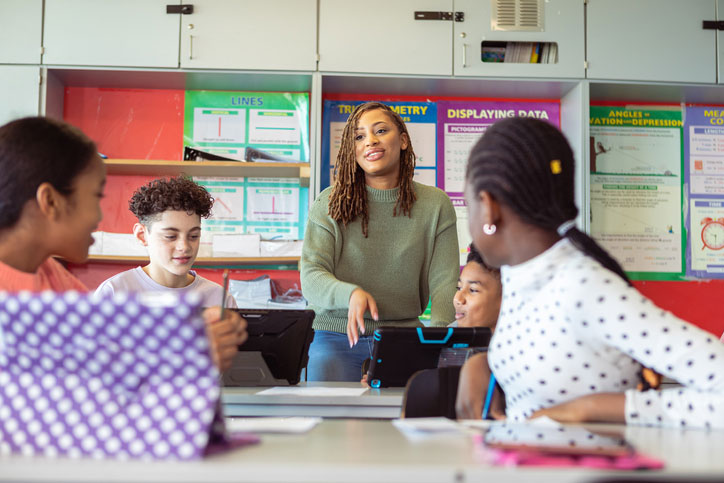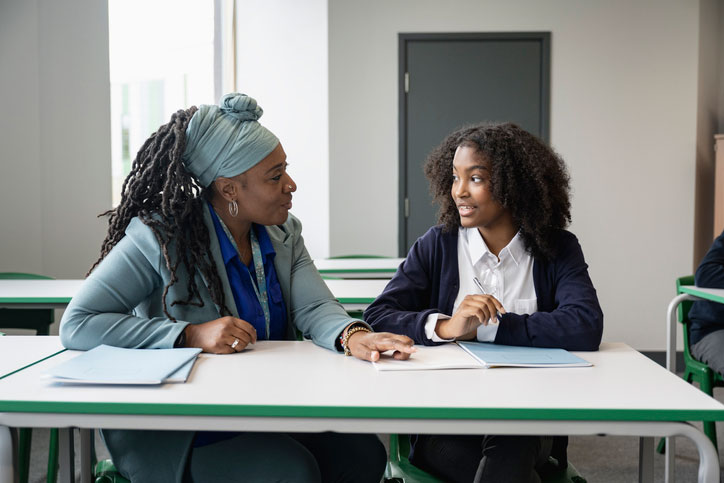School Counseling Education
Creating Safe Spaces as a School Counselor
If you work in education, especially as a school counselor, it’s likely you’ve recently heard the expression “safe space” when discussing issues of students’ well being. This is an important effort to take on the widespread issue of mental health in schools, providing a supportive framework that allows students to do their best. The role of school counselors can be critical to creating safe spaces for students, acting as leaders for students and fellow faculty members alike.
To learn more about what safe spaces are, how to create a safe space for students, and other ways school counselors are creating safe spaces for students, read on.

What Is a Safe Space?
While some schools have the resources to designate a particular room on campus as their school’s “safe space,” the expression in fact more broadly applies as a metaphor.
A safe space is anywhere that students feel that they are protected from emotional harm.
This requires a classroom environment in which students feel that they can express their honest thoughts and engage in meaningful conversation with their classmates. This does not mean an environment free from challenges – on the contrary, a classroom must be a place where students are provoked to think critically and dig deep into issues. A safe space aims to design a classroom experience that is richer and more rewarding because students feel secure.
- Top Picks
Featured Universities with School Counseling Programs
#1
Walden University
MS in School Counseling - General Program. Click here to contact Walden University and request information about their programs.
#2
Grand Canyon University
M. Ed in School Counseling (leads to initial Licensure) Click here to contact Grand Canyon University and request information about their programs.
#3
New York University (NYU)
NYU Steinhardt's accredited master of arts program in Counseling and Guidance: School and Bilingual School Counseling. Through this online program, you will gain the skills you need to become a professional Pre-K-12 school counselor, working with children and families in your community to foster academic achievement and success. Click here to contact New York University and request information about their programs.
#4
University of Denver
Earn a Master's degree in School Counseling online from the University of Denver. Learn from doctoral-level faculty in live classes and gain experience through mock counseling and in-field training. No GRE required. Click here to contact University of Denver and request information about their programs.
#5
Campbellsville University
Online Master of Arts in Education in School Counseling Click here to contact Campbellsville University and request information about their programs.
How to Create a Safe Space for Students
As educators are beginning to think about how to create a safe space for students, school counselors have an important role to play, often spearheading educational initiatives among school faculty to learn how to better implement safe space practices.
Below are some of the most important tasks that educators can take on in creating safe spaces in schools.
Establishing Ground Rules for the Classroom
Students feel a far greater sense of security in classrooms where clear rules are established and, importantly, enforced. This does not mean that all educators have to be strict with their students, but rather, that it’s important to create classroom guidelines that you’re really sure you can follow. If your students see that you aren’t actually holding up one of your ground rules, it will give them the message that the classroom guidelines are flexible.
Rules and norms to set for classrooms should aim to:
- Make all students feel respected and valued
- Encourage honest dialogue and questioning
- Embrace a wide variety of student perspectives
- Facilitate equal participation among all students
- Prevent mean-spirited or bullying behavior between students
- Forbid hate speech or other exclusionary language
Every classroom has its own dynamics and objectives, which means that there is not a one size fits all set of rules that can apply to just any class. School counselors can help teachers think through their goals and formalize a set of rules and expectations that will meaningfully contribute to creating safe spaces for students.

Diversity, Equity, and Inclusion in the Classroom
As you are thinking about how to create a safe space for students, one of the most important issues to think about is inclusivity. Students feel included when their learning environment “meets them where they are,” allowing them to participate in classroom conversations in a way that is true to their own perspective. Beyond preventing aggressive behaviors like hate speech, educators must go the next step to actively foster an environment in which a diversity of perspectives is welcome.
Learning about how racism, sexism, ableism, and homophobia can impact young people is an important way that educators – in particular school counselors – can understand how to best support many of their most vulnerable students. StopBullying.gov explains that students from marginalized backgrounds who are not in supportive school environments are at greater risk of being bullied by classmates. As a school counselor, one can take responsibility for sharing resources with other faculty members to help them understand how to make their classroom environment one that is hate free.
Establishing a Connection with Students
Whether they like to admit it or not, young people take many of their cues from the adults around them. This is certainly the case for their educators, who set the conventions of the school where students spend most of their time.
In order to truly facilitate a safe space, students must feel a sense of connection to their school community and a trust in the adults who are supervising and leading them. This means that one of the most important duties of a school counselor is to make an effort to connect with students. Beyond being a friendly and welcoming figure, this means making an effort to remember things about them, keep track of their interests, and check in on them periodically. Shy students who have trouble opening up can benefit greatly from having someone in their life who makes it easy to have a conversation.
Encouraging Emotional Regulation and Problem Solving
Even the best of classrooms are places where students have to think hard and, at times, confront difficult feelings. A “safe space” does not mean that students should not have to experience challenges. Rather, the best thing a classroom environment can do is teach students how to confront those challenges through emotional regulation and problem solving. Learning how to navigate confusing or stressful situations is an important part of growing up and building resilience, so it should be encouraged among students. It is the difference between a constructive conversation between two opposing views and an argument in which neither party can hear the other side.
Creating Open Classroom Communication
Students should feel secure in their perspectives and encouraged to voice their beliefs and ideas. What’s crucial is that no one student’s voice is privileged over someone else’s. It can be difficult for students and educators alike to learn how to guide conversation to strike a balance between honest, personal discourse and protecting the classroom’s most vulnerable students. School counselors can help teachers assess different situations and problem solve, as well as assisting in developing norms and procedures for class discussions that will make everyone feel respected, included, and safe.
Working with Teachers and Administrators to Create Safe Spaces in Schools
Using the guidelines listed above, school counselors can be a resource to teachers and administrators alike in helping to show how to create a safe space for students. Beyond informal conversations with faculty members, there are more formal activities school counselors can plan to address the issue of mental and emotional health on campus.
Hosting Learning Workshops for Faculty Members
Learning workshops can be a fantastic way to engage faculty members and spread knowledge about how to support students from all walks of life in the classroom. Topics for workshops can include the following:
- Antiracism
- Training to support LGBTQI+ students
- How physical and intellectual disability affects students
- Bullying and cyberbullying: how to support students who are victims and how to be role models for students engaged in bullying
By providing these workshops to faculty members, you’ll become a valuable resource, doing the legwork to find educational materials that many teachers would like to find but do not have the time to track down themselves.
Creating a Dedicated Safe Space On Campus
If resources allow it, making a designated room for students to speak to counselors and facilitate sensitive discussions is a great way to create safe spaces for students. These rooms are sometimes extensions of school counselors’ offices and at other times other classrooms on campus. The advantage of having a particular room on campus be distinguished as a safe space is that students have a clear protocol of where to go to treat mental health issues in school. When students know that there is a clear structure in place to help them, it not only helps them during times of need, but also reinforces a culture of safety and security.
In-Classroom Conversations
Sometimes school counselors can be brought into classrooms to facilitate conversations about difficult topics, from suicide and self harm to cyberbullying to experiences of discrimination. Here a school counselor’s training is a crucial part of what they bring to the table. As a facilitator, you can set the agenda for discussions that otherwise might not happen in classrooms, allowing you to better understand student perspectives and possibly gain insight into experiences that had not been brought up to faculty members.
Why Safe Spaces Are Important
It’s important for school counselors to know how to create safe spaces for students so that they can get the very most out of their education. Studies have shown that students who feel they are in a safe classroom feel that they learn more and even find time to focus on different dimensions of topics than when they are in spaces where they do not feel welcome or secure.
As a school counselor, remember that you are a resource to other faculty members who may not know how to create a safe space for students on their own. In this way, you can have a tremendous impact on the whole student body of a school, helping ease the many pressures on adolescents’ mental health.
More Resources for School Counselors
If you are a school counselor who is interested in developing more skills to help students face challenges in and out of the classroom, take a look at our School Counselor Toolkit.